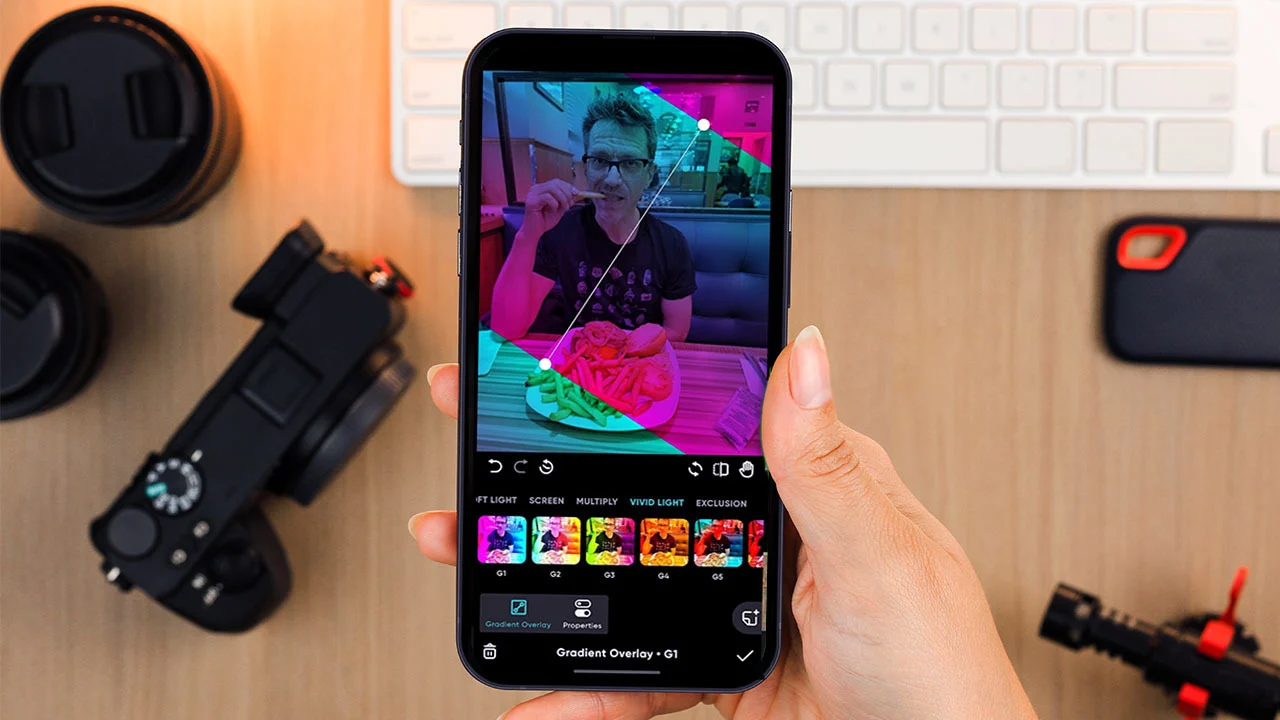Mobile photography has evolved tremendously over the past decade, transforming from a convenient way to snap quick memories into a legitimate art form. As we venture into 2024, the capabilities of smartphones have reached impressive heights, making it easier than ever for anyone to capture stunning images. Whether you’re a seasoned photographer or a beginner looking to dive into the world of mobile photography, this guide will walk you through everything you need to know to get started and make the most of your mobile device.
The Evolution of Mobile Photography
The journey of mobile photography began with the inclusion of simple cameras in early mobile phones. These cameras were rudimentary, with low resolution and limited functionality. However, the rapid advancement in technology has led to the development of sophisticated camera systems in today’s smartphones. Modern smartphones boast multiple lenses, advanced sensors, and powerful software that rival traditional cameras.
In 2024, mobile photography is characterized by features such as:
- High-resolution sensors: Modern smartphones come equipped with sensors that can capture images in stunning detail.
- Multiple lenses: From ultra-wide to telephoto, having multiple lenses provides versatility in framing and composition.
- AI and computational photography: Artificial intelligence enhances image processing, making it possible to achieve professional-level results with minimal effort.
- Advanced editing tools: Built-in editing software allows for extensive post-processing right on your phone.
Getting Started with Mobile Photography
For beginners, stepping into the world of mobile photography can be both exciting and overwhelming. Here are some fundamental tips to help you get started:

- Understand Your Camera’s Features
Before snapping photos, take some time to familiarize yourself with your phone’s camera features. Most smartphones come with a variety of modes such as portrait, night, panorama, and more. Understanding what each mode does will help you choose the best settings for different scenarios.
- Learn Basic Composition Rules
Composition is the arrangement of elements within a photo. Learning some basic rules can significantly improve your photography:
- Rule of Thirds: Imagine your frame divided into a 3×3 grid. Placing your subject along these lines or at their intersections can create a balanced and visually appealing photo.
- Leading Lines: Use natural lines in your environment to lead the viewer’s eye towards your subject.
- Framing: Use elements like windows, doors, or branches to frame and draw attention to your subject.
- Lighting is Key
Lighting plays a crucial role in photography. Natural light is often the best, so try to shoot during the golden hours—shortly after sunrise and before sunset—when the light is soft and warm. Avoid harsh midday sunlight, which can create strong shadows and highlights.
- Steady Your Shot
Blurry photos are a common issue, especially in low light. To avoid this, keep your phone steady while taking a shot. You can use both hands, brace your arms against your body, or even use a tripod designed for smartphones.
- Experiment with Angles and Perspectives
Don’t be afraid to change your perspective. Crouch down, climb higher or move around your subject to find the most interesting angle. Sometimes the most unexpected perspectives can lead to the best shots.
Advanced Techniques and Tips
Once you’re comfortable with the basics, you can start exploring more advanced techniques to elevate your mobile photography:

- Mastering Manual Mode
Many modern smartphones offer a manual or pro mode, which gives you control over settings like ISO, shutter speed, and white balance. Learning how to use these settings allows you to adapt to different lighting conditions and achieve the desired effects.
- ISO: Controls the camera’s sensitivity to light. Lower ISO values are better for bright conditions, while higher values are useful for low light.
- Shutter Speed: Determines how long the camera’s sensor is exposed to light. Faster shutter speeds freeze motion, while slower speeds can create motion blur.
- White Balance: Adjusts the color balance of your image to match the lighting conditions, ensuring accurate color reproduction.
- Utilizing RAW Format
Shooting in RAW format captures more data than standard JPEGs, providing greater flexibility in post-processing. While RAW files are larger and require more storage, they allow for more extensive editing, particularly in adjusting exposure and recovering details from shadows and highlights.
- Exploring Night Mode
Night mode has become a game-changer for mobile photography, enabling impressive low-light performance. This mode typically uses longer exposure times and advanced algorithms to brighten the scene and reduce noise. To get the best results, keep your phone steady and avoid moving subjects.
- Using External Lenses
Enhance your phone’s capabilities with external lenses. Wide-angle, macro, and telephoto lenses can be attached to your smartphone to provide new creative possibilities. These lenses are often compact and easy to carry, making them a great addition to your mobile photography toolkit.
- Editing Your Photos
Post-processing is an integral part of photography. Many smartphones come with powerful built-in editing tools, but you can also use third-party apps for more advanced editing. Some popular mobile editing apps include:

- Snapseed: Offers a wide range of editing tools and filters.
- Adobe Lightroom: Provides professional-level editing capabilities and RAW support.
- PICSART: Empower your creativity with powerful editing tools and vibrant community engagement.
- Experimenting with Filters and Effects
Filters and effects can add a creative touch to your photos. However, use them sparingly to enhance your images without overwhelming them. Focus on adjusting brightness, contrast, saturation, and sharpness to achieve a polished look.
Staying Inspired and Improving Your Skills
To continually improve your mobile photography skills, it’s essential to stay inspired and keep practicing. Here are some tips to help you grow as a photographer:
- Follow Other Photographers
Social media platforms like Instagram and Pinterest are excellent places to find inspiration. Follow photographers whose work you admire and pay attention to their techniques and styles. Engage with the community by participating in challenges and sharing your work.
- Take on Photography Projects
Set yourself small projects or challenges to practice different aspects of photography. For example, you could focus on capturing reflections one week and experiment with macro photography the next. Projects help you stay motivated and explore new techniques.
- Learn from Tutorials and Workshops
There are countless online tutorials and workshops available, many of which are free. Platforms like YouTube, Skillshare, and Udemy offer courses on mobile photography that can help you learn new skills and refine your technique.
- Analyze Your Work
Regularly review your photos and critique them honestly. Look for areas where you can improve, such as composition, lighting, or post-processing. This self-reflection is crucial for growth.
- Stay Updated with Technology
Smartphone technology is constantly evolving, with new features and improvements being introduced regularly. Keep an eye on the latest developments and consider upgrading your device if it significantly enhances your photography.
The Future of Mobile Photography
As we look forward to the future of mobile photography, several trends and advancements are likely to shape the landscape:
- Continued AI Integration
Artificial intelligence will continue to play a significant role in mobile photography. Expect even more sophisticated AI-driven features that enhance image quality, automate complex tasks, and offer creative suggestions.
- Augmented Reality (AR)
AR is set to revolutionize the way we capture and interact with photos. From real-time effects and enhancements to immersive experiences, AR will add a new dimension to mobile photography.
- Improved Low-light Performance
Future smartphones will likely feature even better low-light performance, making it easier to capture clear, detailed images in challenging lighting conditions without the need for additional equipment.
- Enhanced Editing Capabilities
With the increasing power of mobile processors, expect more advanced editing tools and capabilities directly on your smartphone. This will make it possible to perform complex edits that previously required a desktop computer.
- Seamless Integration with Other Devices
As the ecosystem of connected devices expands, we can anticipate more seamless integration between smartphones, tablets, and other gadgets, allowing for a more streamlined photography workflow.
Conclusion
Mobile photography in 2024 offers unprecedented opportunities for creativity and self-expression. With the advanced capabilities of modern smartphones, anyone can capture beautiful, high-quality images. Whether you’re a beginner or a seasoned photographer, the key to success lies in understanding your tools, practicing regularly, and staying inspired. Embrace the technology, experiment with different techniques, and most importantly, have fun capturing the world around you.


